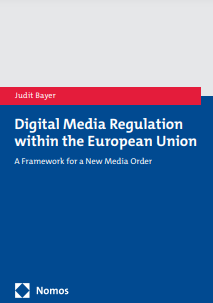Keyword – star studies
Guld, Ádám:
Guld, Ádám:
“I think that I’m the Jolly Joker, because if there’s no topic, you can still rely on me.”
Over the past 15 years, Kelemen Anna has become a fixed star in the Hungarian celebrity world. Some admire her, but the majority of the public enjoys forming harsh opinions about her activities. This high level of visibility could only be achieved by a comprehensive media presence that includes the press, television, radio, books, and online media. This visibility also demonstrates that the public’s interest in the celebrity has been constant for many years. The phenomenon also raises a number of exciting questions: What characterizes today’s celebrities, and why do we find the concepts of celebrity society and celebrity culture increasingly relevant? Who are celebrities, and what role do they play in the age of late modern, mediatised publicity? What may be behind this increased interest in celebrities, and what strategies do the most successful celebrities use to maintain public interest? This study seeks answers to these questions through an examination of the Kelemen Anna phenomenon.
Keywords: celebrity culture, celebrity society, hybrid celebrities, star studies
“I think that I’m the Jolly Joker, because if there’s no topic, you can still rely on me.”
Médiakutató Winter 2020 pp. 71-83
Guld, Ádám:
Guld, Ádám:
“Stars are everywhere.”
There is a long-standing trend in the world of stars: the most successful players are simoultaneously present on multiple platforms. While the export of fame from one channel to another could only be realised within narrow frameworks until the end of the 20th century, in the digital era there are almost unlimited possibilities for expanding and strengthening popularity gained through the media. At the same time, the mechanisms of the celebrity industry are becoming increasingly complex. The conscious management of various offline, online and non-media appearances is now a must-have for better visibility with the ever-increasing goal of reaching a full, 92 Guld Ádám 360-degree presence. In this context, one can assume that these processes lead to serious changes in fandom culture and user practices. Who are the fans following, and which channels do they use? How do audiences react to the fact that stars now appear on all possible surfaces? How does this affect follower activities? This paper primarily seeks answers to these questions.
Keywords: celebrities, fan studies, generation Z, influencers, media convergence, media culture, ordinary famous people, stars, star studies
Médiakutató Spring 2020 pp. 79-92
Tóth, Zoltán János:
Tóth, Zoltán János:
Platformisation and movie stars
This study examines the relationship between platformised entertainment and post-millennial film culture with a focus on the mediatisation and representational critique of contemporary film stars. It assesses the impact of blockchain technology on film production, distribution, and marketing, and explores the consequences of the transformation of the media environment surrounding film stars for the film industry. It places particular emphasis on the competition between the film industry and social media platforms in the context of the emergence of new types of celebrities and star regimes. This examination of competition situates the study at the intersection of media studies and film studies. It has a dual purpose: on one hand, it provides insights into film consumption, reconditioned as a result of technological paradigm shifts and, on the other, it offers perspectives to revisit star theory approaches.
Keywords: celebrity, platform, star, star studies, streaming
Platformisation and movie stars
Médiakutató Spring 2025 pp. 37-47 https://doi.org/10.55395/MK.2025.1.3



